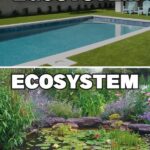ConnectOne Bank invests in technology that generates data to boost efficiencies, but the systems are only beneficial if employees use them consistently.
For example, the $9.8 billion Englewood Cliffs, N.J.-based bank has used nCino’s loan origination system since 2017, Chief Technology Officer and Executive Vice President of the bank Sharif Alexandre tells Bank Automation News on this episode of “The Buzz” podcast. However, the bank since then has added both modules and employees, so use of the technology has been inconsistent.
To increase consistency and usage, the bank has teamed up with nCino to create a re-education strategy for all ConnectOne Bank staff, Alexandre says. The training took place in recent weeks.
The education for employees ensures that the they know how to the tech to create a foundation for “good, clean data to come out of that system so that we can use it going forward,” he says.
Listen to ConnectOne’s Sharif Alexandre and Siya Vansia, chief innovation and brand officer at the bank, discuss technology and data strategies.
Early-bird registration is now available for the inaugural Bank Automation Summit Europe 2024 in Frankfurt, Germany, on Oct. 7-8! Discover the latest advancements in AI and automation in banking. Register here and apply to speak here.
The following is a transcript generated by AI technology that has been lightly edited but still contains errors.
hello and welcome to The Buzz a bank automation news podcast. My name is Whitney McDonald and I’m the editor of bank automation News. Today is July 8, 2024 joining me from connect one bank is Chief Technology Officer and Executive Vice President, Sharif Alexander, and Chief Brand and Innovation Officer siya vansia. The tech leaders are here to discuss the bank’s data strategy and innovation efforts. Thank you both for joining us. Sure.Siya Vansia 10:28:54
Well, thanks Whitney for having the both of us. It’s exciting for me to do this with Shari too. I don’t think I can do my job without so I am the Chief Brand and Innovation Officer at connect one bank. I can’t believe I’m saying this, but I’ve been with the company over 13 years. So I started at a a true community bank, a small 45 person, 400,000,400 $50 million bank, and today we are a regional, bordering, regional commercial bank with a presence in New York, New Jersey and South Florida, so I oversee the marketing communications PR, anything with our logo on it for the bank and our other brands, along with innovation, which is really sort of shaping strategies around FinTech partnerships, potential investments and understanding the landscape and where opportunities for connect one exist to partner and obviously work hand in hand with Sharif on that front. And yes, Sharif on
Whitney McDonald 10:30:07
that note, why don’t you tell us a little bit about your role?
Sharif Alexandre 10:30:09
Sure, I’m frika Alexander. I’m the Chief Technology Officer at connect one bank, and I’m responsible for developing and executing our technology strategy, managing our system and data infrastructure and our software development initiatives. I joined connect one bank in 2022 so I’m a youngin in the banking industry, so it’s about two and a half years and before that, I came from the tech world. I actually founded and ran several startups. So it might seem a little odd that I come from the startup world to a bank, and the that journey really started with getting to know connect one bank and its entrepreneurial culture that was completely embodied by our founder and CEO, Frank sontino, he’s, he’s, he’s a builder. And that translates into, you know, the culture of the bank and the way it operates as an entrepreneur, sort of an entrepreneur organization, serving our clients in that way.
Whitney McDonald 10:31:12
Well, this next question, and this will kind of get in, get us into the bank’s actual technology and innovation strategy, but it sounds like maybe you can both talk us through the innovation strategy at connect one, but maybe Sharif, maybe you could kind of kick things off and talk us through bigger picture and then we’ll get into some more specifics here. But how do you really approach tech and innovation, especially from the tech background that you have? Yeah,
Sharif Alexandre 10:31:35
well, like I said, connect one has always been a tech forward institution, right from its very beginning in and it was also, you know, focused on, on the on the client as the primary it’s not wasn’t just technology, it was in technology and service of the client, and what we can do to make their life a lot better, reduce their friction. So if you think back in 2005 you know probably your biggest technological decision was whether or not to have online banking or not, right? So fast forward to today, and the technology landscape has completely evolved and blossomed in ways that I think it’s been great, but also challenging. We have so many different options with different FinTech partners, with fintechs out there offering, you know, very niche solutions. And so a bank today has a choice of, you know, to to buy the technology, to partner with fintechs, or to build so and over the years, we’ve, we’ve actually done all three, you know, it’s just as an example. We ended up, a few years ago, buying a FinTech called bowfly that services and provides products and services for the franchise industry. On the partnership side, we’ve partnered with mantle for our deposit origination system. We’ve been working on that for the last year or so, and that project is just coming along great. And on the on the build side, one of the first things that I did when I joined connect one was to build a data warehouse, a data lake in the data warehouse, so that we can aggregate the data from our various data sources. And that’s just, again, that just lays the foundation for other, you know, everything else that we can build on top of
Whitney McDonald 10:33:24
that. Tia, did you want to also add to the overall strategy on. Innovation site.
Siya Vansia 10:33:28
So I think, I mean, I think Sharif hit the nail on the head, and we’re in an environment where, especially after 2021 where there’s, for me, there’s never been a better time to be in bank innovation, right? There’s so many options where we’re constantly evaluating what’s on the market. I think, from a higher level, strategic position, like Sharif said, we were founded our it’s in our DNA to sort of build a our bank around the client. And so, you know, when we first established the innovations division, first mandate was, okay, what’s the strategy? How? What does innovation mean at connect one bank, and so to put it very simply, my North Star for our company is to continue the existing mission of the bank. So connect one is a high performing commercial bank that delivers a best in class experience to the small, middle market client. Everything we do from an innovation standpoint, or technology investment standpoint, should support that that mission of the bank. And so it’s sort of broad, and it’s a little bit probably more soft than what you may hear from other tech teams, but it serves as a North Star for our entire team as we’re going out and evaluating the market. And Whitney, you’ve been in this space for some time. You know how sort of the trend cycle works, helps us navigate what trends are worth unpacking and what aren’t, knowing that we’re building around our clients and around that company’s mission.
Whitney McDonald 10:35:06
Well, it definitely sounds like you’re both on the same page, of course, of course, client centric. I know that Sharif talked through partnering, building, buying. Of course, that that question of buy versus build, that you’ve talked through many times. But I mean, maybe we can talk through, how do you collaborate? How do you work together? I know that you have this innovation unit, this innovation division, which is unique, and you’re starting to hear more on the innovation front, but maybe talk me through, how do your teams work together? How do you collaborate? How do you get on the same page when it comes to what you really should be innovating when it does come to that client centric approach?
Sharif Alexandre 10:35:44
So I mean, I think we can start with just the idea that, you know, the business drives in the technology, right? And I think that that’s something that I think, especially coming from the tech side, you get lost around the next shiny object, the next shiny thing that’s going to be super cool, super interesting, super hyped up. And we try to stay away from that and always really stay focused on the client, really, what are their needs, and how do we deliver the value that we, you know, started this, this bank for right, for them to and to reduce their friction, increase their their experience. So there’s and that that takes many forms, right, the the actual technology, or the, you know, could essentially be directly facing them, you know, some front facing piece of system or that they interact with directly, or it could be literally just increasing efficiencies on the back end that ultimately allow us to service the client better. So we look at it holistically, right? And we don’t just look at one little thing or what is sort of like in the hype cycle of tech. Obviously, we keep track of that. We try to keep track of what is going on in the industry and what makes sense and how it might fit with our overall larger strategy, or sort of strategic roadmap, but it is always keeping the client front and center and to that. So how do we do that? We do that by talking to them. We listen. I think part of the, you know, the primary job description for that I have, is to listen, both to clients and internally, to our team members, just to understand what their needs are. What are they saying? What are they not saying? What are their pain points? And then to go and, you know, figure out the right mix of build by sort of, to match those, to cover those use cases, essentially.
Siya Vansia 10:37:38
Yeah, and just to add to that, I mean, I think it’s, we’re, we have very different skill sets, you know, I can’t. So I always joke with Sharif. I say, when he’s, he’s like unpacking the tech. It’s like watching a foreign film. But I think it’s, it’s we spend a lot of time together. And I think what is very helpful is, you know, I Sharif brings such a unique perspective because of his background. I think I’m a little I’ve been in banking for so long, so I think the hybrid works, and I we do a really great job of spending a lot of time together upfront in order to make a decision. You know, does does this use case make sense? Is there a business case here? How does this impact our clients? What are the economics of it? What’s the technology and so. Uh, it takes, it takes so much work and collaboration to get to a go or no go decision that by the time we are ready to execute we we’ve created enough alignment to divide and conquer.
Sharif Alexandre 10:38:41
And the other thing I’d add is that sometimes we just just going back and forth and just thinking through ideas. I mean, there’s like, again, the technology is moving so quickly. A lot of a lot of just conversations don’t end up going anywhere. It’s literally just exploring the hey, does this make sense? Is there a real use case here? Or again, you know, just trying to sort of separate the real value that we want to deliver to our clients from, from the hype of that particular tech that might just kind of be in the moment.
Whitney McDonald 10:39:10
Yeah, a couple things to unpack here. One thing is, definitely you don’t need to get caught up in the the shiny new tech, right? And I think that that kind of came full circle at the end of this Converse or at the end of this question that started this you don’t need the sexiest new technology, right? Sometimes it can be a little bit more simple. Sometimes it can be a front end or back end efficiency. So we talked big picture. We talked about how you approach innovation, how you work together. Maybe we can kind of talk through some of these digital tools or solutions or projects that you guys have worked on. Maybe you can talk me through an example or two here of some projects that you do have, either in the pipeline or that are live today that you’ve collaborated on together based on that client need and that strategy,
Sharif Alexandre 10:39:55
yeah, so as far as I mean, we have, it feels like we do a lot, and so there’s several projects that that we’re currently Working on. One is working with our technology partners, Z suite, which is offers a commercial escrow and sub accounting system, again, that’s to enhance the client experiences for our commercial customers. It really gives them something that allows them to, you know, sort of one, I guess the one of the things that help that we understand is that in order to give the best service to our clients, sometimes it’s super high touch, personalized service, and sometimes this is giving them the ability to self service, because that’s what they need to be able to bank on their time and on their schedule. And this product does exactly that. It gives them the ability to sort of manage their their it gives them a self service sort of way to manage that as well as if they decide, you know, they don’t want to, we can still go in with the high touch personalization that we do. Another project like I mentioned before was is mantle we that was, for us, a complete omnichannel deposit origination system, and we did consumer online onboarding, business onboarding, and we’re completing the branch go out right now as well, so completely on omni channel. We’re also looking at it just internally, looking at optimizing workflows that that we have. You know, it’s interesting, there’s, a an organization actually read the stat, and it’s not too long ago, it was just mind blowing that, you know, the average enterprise is over 1000 apps in your organization. So you can imagine 1000 different apps, you know, that don’t necessarily talk to each other, or that might have some very limited sets of integrations. And so there’s a lot of swivel chairing that still happens. And to me that that’s one of, one of the things that we can do a lot is just optimizing that, that connectivity between, between those apps, you know what? I call it, the sort of creating the connective tissue so that, you know, it is, it is just better levels of integration, and that ultimately leads to better data, which, you know, again, is a huge, you know, priority for us, you know, talking back about the data warehouse and ad so, and then we also have, you know, new verticals that were that we launched. We partnered with Nimbus and launched the venture on brand for connect one. And that’s that again. So those are sort of all the different areas that we are exploring,
Siya Vansia 10:42:37
not the continuous development of bowfly, which, which is why Sharif has no hair. Yeah,
Sharif Alexandre 10:42:44
yeah. So yeah, actually, yeah. And then it goes into the, you know, the custom software development that we’re doing and building out again, platforms, the both side platform, just rebuilding and expanding on that.
Siya Vansia 10:42:57
Yeah, and, I mean, Sharif touched on a lot of great initiatives. There’s, there’s always sort of the headline initiatives that you’ll see in press releases, which are important projects. But there’s, I think, since inception, and really, through building a great team, we’ve, we’ve built a culture of continuous improvement. And so there’s, there’s the headline items that we talk about, but they’re sort of the continuous development. Sometimes it’s developing a. Small. I don’t, I don’t want to speak tech, but developing a small solution that, to your point, connects two tools and eliminates manual process for us, and that’s sort of, sort of always going in the background. You know, we’re a growth company. We’ve made it to 9.8 billion in just under 20 years, and so a lot of we’re always looking to the future for new partners, but we also have to continue to optimize our infrastructure to support scale.
Whitney McDonald 10:44:00
Now, speaking of optimizing that infrastructure, and I know that you both gave examples there of what that looks like and what you’re investing in on that front, one thing that I wanted to break into a little bit here, that Sharif was talking through, is the data strategy, the infrastructure, the systems architecture behind that data strategy, Sharif, maybe you could take that a step further. How are you making sure that you are tapping into your your good, clean data, that data is the name of the game right now, and everyone’s tapping into their data. So how are you ensuring that you’re doing that in a secure, responsible way that’s giving you real outcomes based on your data? Yeah,
Sharif Alexandre 10:44:35
no, that’s a really good question. And I think there’s two components to that. There’s the technological component, and then there’s the human component. And I actually realized that the human one is the much harder one, but on the tech side, which is the easier of the two, it is literally getting we decided to build our own data where so, I mean, there are obviously systems out there that we could have built, you know, to off the shelf or customized, but we decided to build from scratch because we wanted to have that control over every part of that, that architecture, right from from how it’s built to the to the ingestion workflows, to the orchestration, and also that because we wanted, not only to be able to take in the data, to be able to clean it and to store it in the way that we wanted, that we needed to, we knew that we were going To be building off of that. So as an example, we had, you know, one system where we were doing, I think it was five to 10 different daily exports out of that system, into into, into other systems, right? And and each one had sort of its own, sort of separate needs and all that kind of thing. So you had all these different scripts running at all different hours, and we took that, you know, ingested it into the data warehouse, we normalized that data, and then, you know, from a single place, we’re able to export it out to all tech, right, that, and now it could go to 10 to 100 the scale is there for us to be able to easily do that. So it that, from it some from a techno from a technology perspective, we architected and built a data warehouse and the ability to intake different data sources so that we could, you know, do that the hard part is the human part, right? Is the the change management around people. Um, using the systems that that are are generating these data to use them effectively, to use them correctly, not to use workarounds, and that kind of thing. And we’ve invested a lot in that as well, you know, we just recently went, you know, we use as an example encinos, our loan origination system, and it’s a fantastic system that doesn’t and, you know, it is really, you know, the the heart of what we do is generating commercial loans, and so it’s a very cool piece of our, of our infrastructure. But, you know, it’s also as good as the data that you put into it. And we were one of the first, or, you know, early. We one of the early adopters of Encino. I think we started using it back in 2017 and over the over the years, you know, we’ve had, you know, new employees come and different, you know, modules get added and that kind of thing. And so we noticed that the usage was not as consistent as we’d like to so over the last six months, we worked through an entire strategy to re educate the entire user, you know, client base here, our employees here, to be able to reintroduce and so, you know, to the to everyone that needs to use it and to norm, sort of normalize, or to get everyone to be able to use it in a consistent way. And that really was in service one of just, you know, getting efficiency, making sure people know how to use it and use it well, but also to create the foundation for good, clean data to come out of that system so that we can use it going forward.
Whitney McDonald 10:48:06
And has that consistency changed over the past six months? Well,
Sharif Alexandre 10:48:10
we spent six months in partnership with Encino to do a week long training for the entire company. That just happened. That just happened a couple of weeks ago. So we are keeping very close tabs on that there were definitely sort of. We baked in a lot of metrics, just, you know, to track how we’re doing in that, in that sort of, in that effort. Let’s talk in about six months, the, you know, the report of how well we actually did
Whitney McDonald 10:48:43
well. I’ll definitely be following up with you on that one, because that’s an interesting initiative and kind of a training effort, but also something that hopefully will be quantifiable in the coming months. So that’s great. So we we talked through strategy, we talked through products in place, we talked through how you look to your clients for what innovation needs they are need to be met for them. So maybe we can kind of do more of a Forward Look here on what the rest of the year, or even further, looks like for you. What are you looking into? What technology are you exploring right now? What are you excited about? What are you working together on?
Siya Vansia 10:49:25
So, I mean, it’s crazy that there’s like less than six months left in 2024 but I think it’s, it’s, I think we’ve been incredibly exciting like close out to the year, and I think 2025 is going to be that’s going to spill over into 2025 so we’ve expanded our talent base. We’ve made some really great hires on the digital cooperation side, and that only propels our our ability to transform our infrastructure and really build best in class solutions. Um, think, very candidly, a lot of the projects that Sharif had talked about are coming to fruition. And so, you know, one once those systems are fully implemented, it creates a whole new layer to to build on and develop on. And so that’s incredibly exciting. I know he touched a little bit on venture on which was built in partnership with a tech provider called Nimbus. We’re live. We’re in production today we’re live, and so the rest of the year is really building that product out in conjunction with the client base. To me, that’s incredibly exciting. So we’ve got, like, the core down, and now it’s really tailoring that product set to the client. And I think what through Sharif’s efforts within our company, I mean, he talked a lot about, like, the hard part about data is that people, but, but, well, I should say, and we built a lot of muscularity around our company, around data, right? For a long time, data was, was the responsibility of a team, and really one department access the data. And now, with so many different departments, running reports, logging into our data lake, understanding client behaviors, or, you know, whatever, whatever is pertinent to their department, I think, allows us to look ahead very differently, because our whole company has built this muscularity right and so we’re leveraging insights. Driving better results. Every division is thinking about their solutions in both a client centric and a data centric way, and I think that’s incredibly exciting. Of course, there’s always going to be the trends, and I we look forward to them. It is exciting to see where the market’s going. Look at new technologies, look at the new use cases that are possible. And so I’m excited to see what happens in the payment space, what happens in identity, what happens in fraud. There’s a lot of talk about open banking. Think it’s too early to make any predictions, but it’s all very exciting.
Sharif Alexandre 10:52:08
You know, I think the one thing I’ll add, and sort of goes back to that people thing, and I hope that didn’t come across, like, in a negative way. It’s coming from the tech space. There really is an assumption that you build it and not necessarily they will come but like, Hey, this is a great solution to solves a real problem. And now I’m just going to, you know, put it out there in the world, and people should use it and and, you know, you know, it was kind of really eye opening, from my perspective, to to come here and to see that, you know, the it could be the best thing in the world, but if you can’t sell it, and you can’t convince people that it’s something that is going to be a real value to them and ultimately, to Our clients, again, going back from service to our client, that, you know, it’s never, it’s never going to be adopted in a way that it’s going to really have that full value. We’ve seen it again with internal systems, and it’s something I keep, you know, very you know, sort of understand that, take that lesson and apply it to anything that we look to either build by or park right? Because it has to be something that, not only is it a good piece of technology, but is it something that we can bring into the organization in a way that allows that, that that will be adopted, in the way that it needs to be adopted. And we’re going to build, build in and bacon enough to. Time and resources to make sure that that technology is adopted correctly. And I think that that’s that’s interesting and it’s exciting. I know that might sound kind of boring on some level, but you know to get people to to use a new system and to use it well so that, and then they ultimately, you can still want to see that light bulb switch right when it all of a sudden clicks, and they start to use it and use it correctly then, and you kind of see, like, wow, this is really making my life a lot easier. That’s, that’s where, you know, you sort of hit like, you know, Jack life.
Whitney McDonald 10:54:02
You’ve been listening to the buzz a bank automation news podcast. Please follow us on LinkedIn. And as a reminder, you can rate this podcast on your platform of choice. Thank you for your time, and be sure to visit (email protected) for more automation news. You.
Transcribed by https://otter.ai








